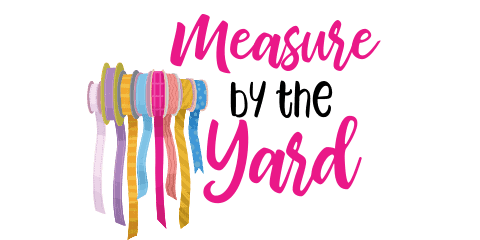Rotary cutters help you cut fabric quickly and accurately when sewing or quilting.
However, since these cutters are very sharp, use a mat and a ruler to help you make straight cuts and be careful when changing the blades.
Rotary cutters come in different diameters like 28 mm, 45 mm, and 60 mm. Also, rotary blades differ in features such as ergonomic handles, blades for specific tasks, or different mechanisms for blade replacement.
To help you understand how you should choose which blade to use, here are the seven most common types of rotary cutters and when you should use them.
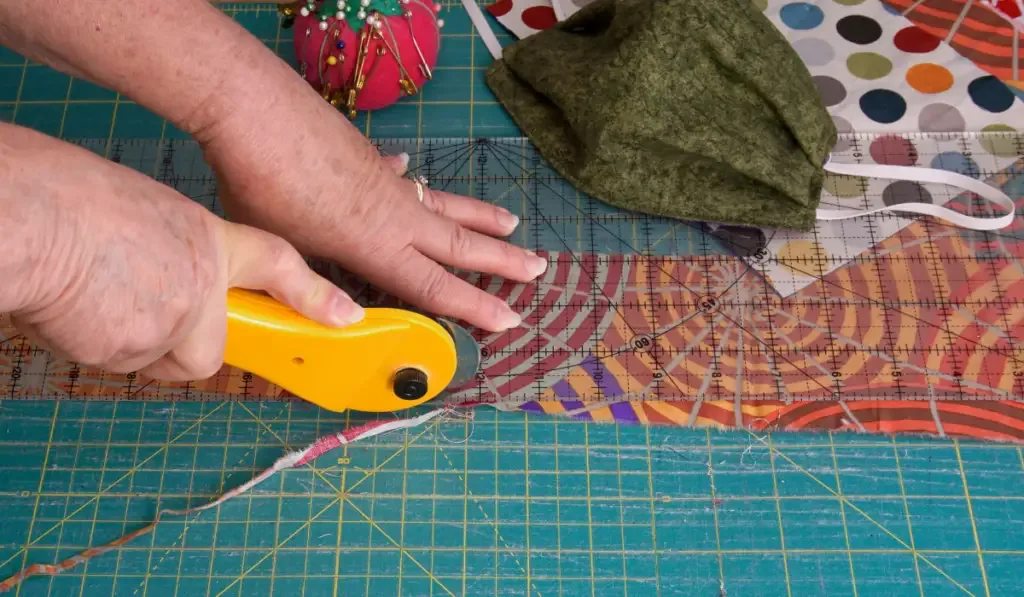
1. Straight Blade Rotary Cutter
It has a sharp circular blade with a straight edge attached to a handle.
When not in use it has a safety mechanism that covers the blade. But when you’re ready to use the straight rotary cutter, it rotates as it cuts through the fabric.
Here are some of the common straight-blade rotary cutters:
- Fiskars Titanium Comfort Stick Rotary Cutter
- OLFA RTY-2/DX Ergonomic Rotary Cutter
- Martelli Rotary Cutters
2. Pinking Blade Rotary Cutter
Pinking rotary blade cutters have a circular blade with a serrated edge that resembles a zigzag.
This type of edge enables the pinking rotary cutter to create a zigzag edge on fabric.
Pinking rotary cutter blades prevent fraying.
These blades include:
- OLFA 45 mm Rotary Cutter Pinking Blade
- Fiskars 45 mm Rotary Cutter Pinking Blade
- Autotoolhome 45 mm Wavy Rotary Cutter Blades
These rotary blades save time, especially when you’re working on large projects, as they cut through the fabric quickly and accurately.
They also help you add a touch of uniqueness, as you can opt for the serrated edges to be decorative, especially if you use fabric that tends to fray, like woven cotton or linen.
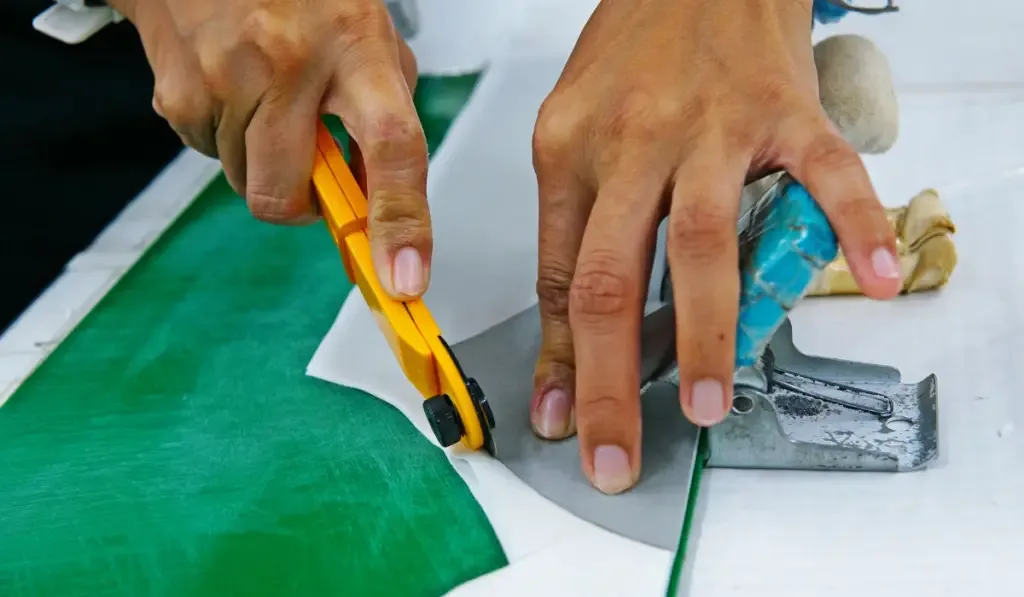
3. Wave Blade Rotary Cutter
These rotary cutters add flair to your fabric by creating a decorative wave edge.
When the blade rolls off your fabric, it creates a wavy cut that adds a charming border, enhancing the overall appearance.
Wavy rotary cutter blades include:
- Fiskars Wave Rotary Cutter
- Olfa WAB45-1 Wave Blade Rotary Cutter
- Havel's 45 mm Wave Rotary Cutter
A wavy rotary cutter blade is easy to use, but, unlike a pinking blade, it doesn’t prevent the fabric from fraying.
4. Perforation Blade Rotary Cutter
A rotary cutter with a perforation blade has small even holes along its cutting edge.
When the blade rolls along fabric, it leaves perforated holes that penetrate it without completely cutting through.
These perforated holes — such as from the OLFA PRC-2 or the Fiskars 45 mm rotary blades — add decorative effects while making it easy to tear or remove any fabric section without scissors.
Also, they make it easy to align seams and make quilt lines.

5. Ergonomic Handle Rotary Cutter
An ergonomic rotary cutter has a comfortable handle for cutting intricate shapes on the fabric.
These rotary cutters prioritize the user’s comfort during prolonged cutting sessions and allow for better control when cutting along curved lines.
The OLFA 45 mm Ergonomic Rotary Cutter has a squeeze trigger that exposes the blade and self-retracts for safety.
Other examples include:
- Martelli ErgoCutter
- Fiskars Ergonomic Rotary Cutter
- Headley 45 mm Ergonomic Rotary Cutter
- Prym Ergonomic 45 mm Rotary Cutter
However, ergonomics is not about the blade but about the handle.
It’s common to have a rotary cutter with an ergonomic handle and a different blade, such as a straight, curved, perforated, wave, or pinking blade.
6. Curved Rotary Cutter
The rotary cutter has a curved blade enabling you to make perfect cuts on curved lines.
These blades, such as the Olfa 45 mm Curved Rotary Cutter, are perfect for making smooth curves on a fabric thus allowing for better accuracy without jagged edges.
Also, some curved rotary cutters have an ergonomic handle that makes them easy to use for extended periods.
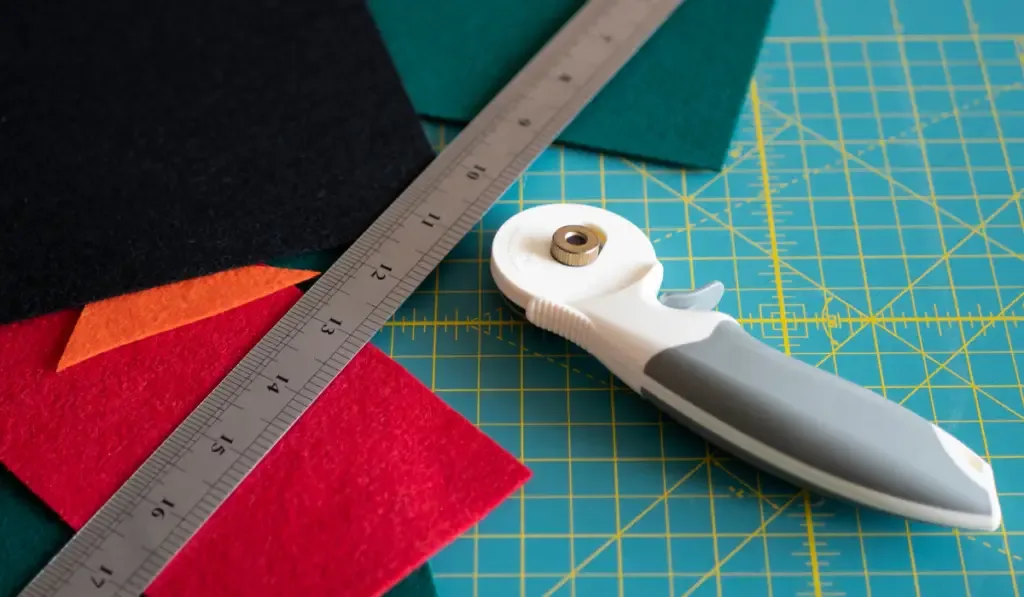
7. Multi-Blade Rotary Cutter
A multi-blade rotary cutter has multiple blades in a single tool and you can swap out blades easily when one becomes dull.
This improves the cutting accuracy as you can cut evenly and simultaneously. Also, it makes it easier to cut faster when working with a lot of fabric — especially when you are making the same cuts.
Some models can have more than two blades, such as the Prym 45 mm Multiple Blades Rotary Cutter .
How to Choose and Maintain a Rotary Cutter
When choosing the perfect rotary blade, you need to consider your personal preference and the nature of your sewing or quilting project.
For delicate cuts, a smaller 28 mm blade is ideal.
But if you are dealing with a heavy-duty project that involves cutting through multiple layers of fabric, a larger 60 mm blade will make it easier to make quick and accurate cuts.
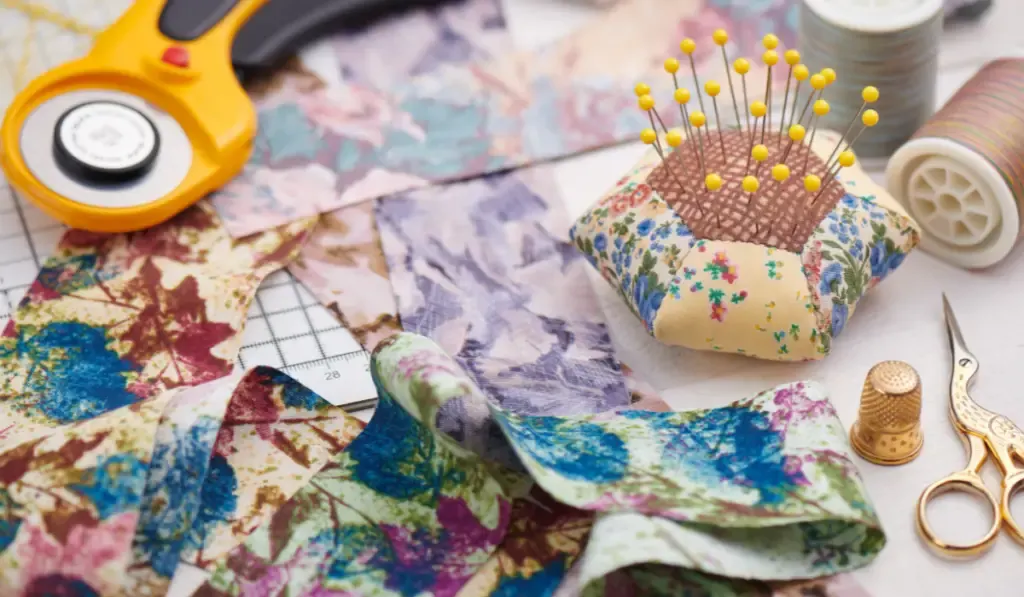
Still, there are other factors to consider, like the comfortability of the handle — ergonomics — especially if you will be using the rotary blade for extended periods. Therefore, use a rotary blade with an ergonomically designed handle as it will provide better grip and control during extended cutting.
Before purchase, consider whether the blade is replaceable.
Replaceable blades allow you to easily replace them when they become dull rather than having to purchase a new cutter.
When it comes to maintenance, do the following:
- Do not touch the rotary blade with your bare hands as it can lead to oil or moisture transfer that causes rusting.
However, if you find that you are always touching the blade, wipe it with a clean, soft, and lint-free cloth after every use to prevent rusting or it becoming dull.
Even if you do not touch the rotary blades, wipe them after every use or before you break for the day as it helps the blade last longer. - Follow the manufacturer’s instructions during blade replacement and disposal.
Always ensure that you dispose of the old ones using the proper methods, such as placing them in a disposal container before throwing them in the trash. - Keep the rotary blade away from children and pets and always store it with a blade guard or with the retractable mechanism engaged.
- Always use a self-healing mat while cutting. A self-healing mat is durable and resilient, as it closes up when cut with a blade, preventing the mat from getting damaged or leaving permanent marks.
- Always keep your fingers away from the blade, especially when cutting curves, as you can easily injure yourself.
- Do not use a multi-blade on very hard materials like fabrics separated by a carton of plastic as it may dull or damage the blade.
- Perform regular inspections for any signs of wear and tear of the rotary cutter and ensure all the other moving parts like the blade are in perfect condition. If you notice any issues, contact the manufacturer for guidance.
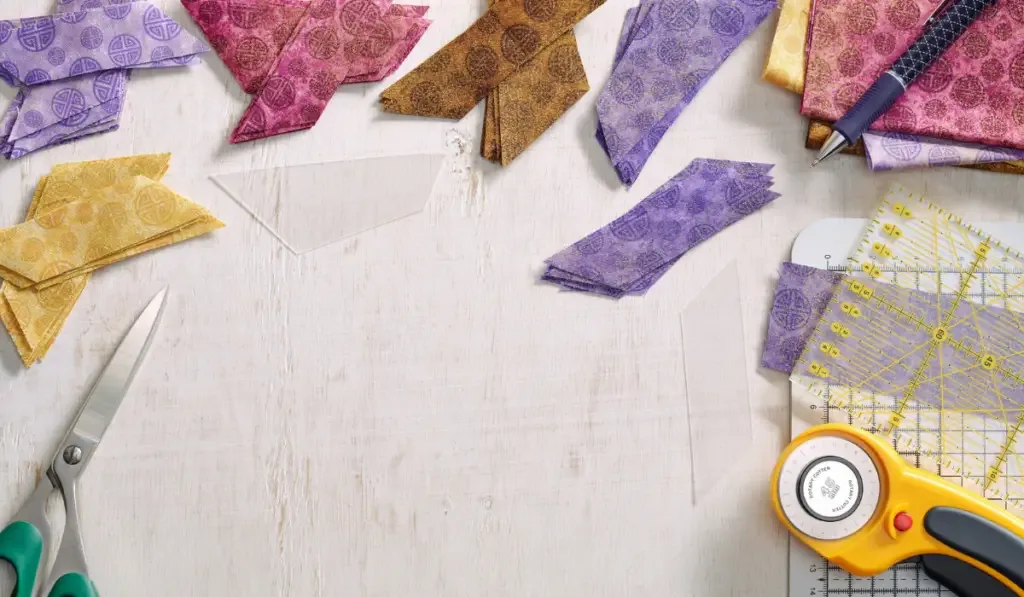
Comparison with Scissors
Many quilters and garment makers interchangeably use rotary cutters and scissors because they can do similar tasks, especially if you’re experienced.
However, the rotary cutter and scissors do have their differences.
Below are the rotary cutter and scissors similarities and differences:
| Similarities | Differences |
| Cut fabric easily as they are hand-operated, allowing for better control and precision in cutting. | Rotary cutter blades have a circular blade attached to a handle, whereas scissors have two pivoted blades. |
| Necessary for cutting different fabrics for sewing. | Rotary cutter blades rotate to cut fabrics, whilst the scissors open and close to cut. |
| Cut curves effectively. | Rotary cutter blades are primarily used in sewing and quilting, whereas scissors are versatile tools with many uses. |
If you are a beginner in sewing or quilt making, use both until you notice which tool you are comfortable with.
Also, the choice between rotary cutters and scissors depends on your specific cutting needs, but having them both is essential to cut any fabric easily.
Final Thoughts
Rotary cutters are necessary tools for efficiently and precisely cutting fabric. But they come in different sizes and types that work differently.
So by using a rotary cutter for each specific task, you can save time, prevent fraying, add unique decorations and make clean cuts without wasting too much time.
However, experimenting with some of these rotary blades will enable you to realize the rotary cutter you prefer, thus elevating your craftsmanship to new heights.
Resources
- https://suzyquilts.com/quilting-rotary-cutters-a-complete-guide/
- https://modernmoonquiltstudio.com/best-rotary-cutters-for-quilting-and-sewing/
- https://www.gathered.how/sewing-and-quilting/quilting/best-rotary-cutters/
- https://blog.fatquartershop.com/the-best-rotary-cutters-for-quilting/
- https://www.youtube.com/watch?v=d9M4JFn45rQ
- https://teachyoutosew.com/best-rotary-cutter-for-fabric/
- https://sewingyarn.com/rotary-cutter-vs-scissors/
- https://mindymakes.com/should-i-buy-rotary-cutters-vs-scissors-for-my-sewing-toolbox/
